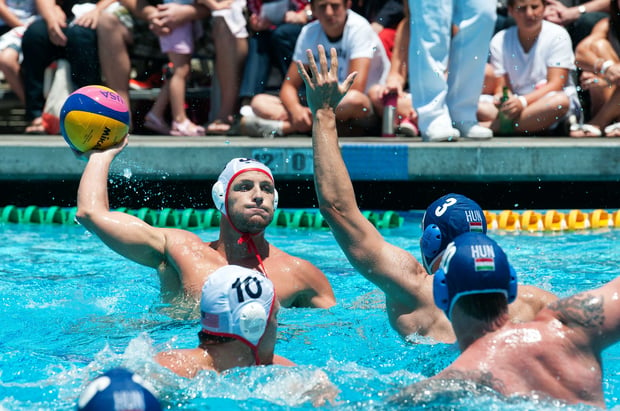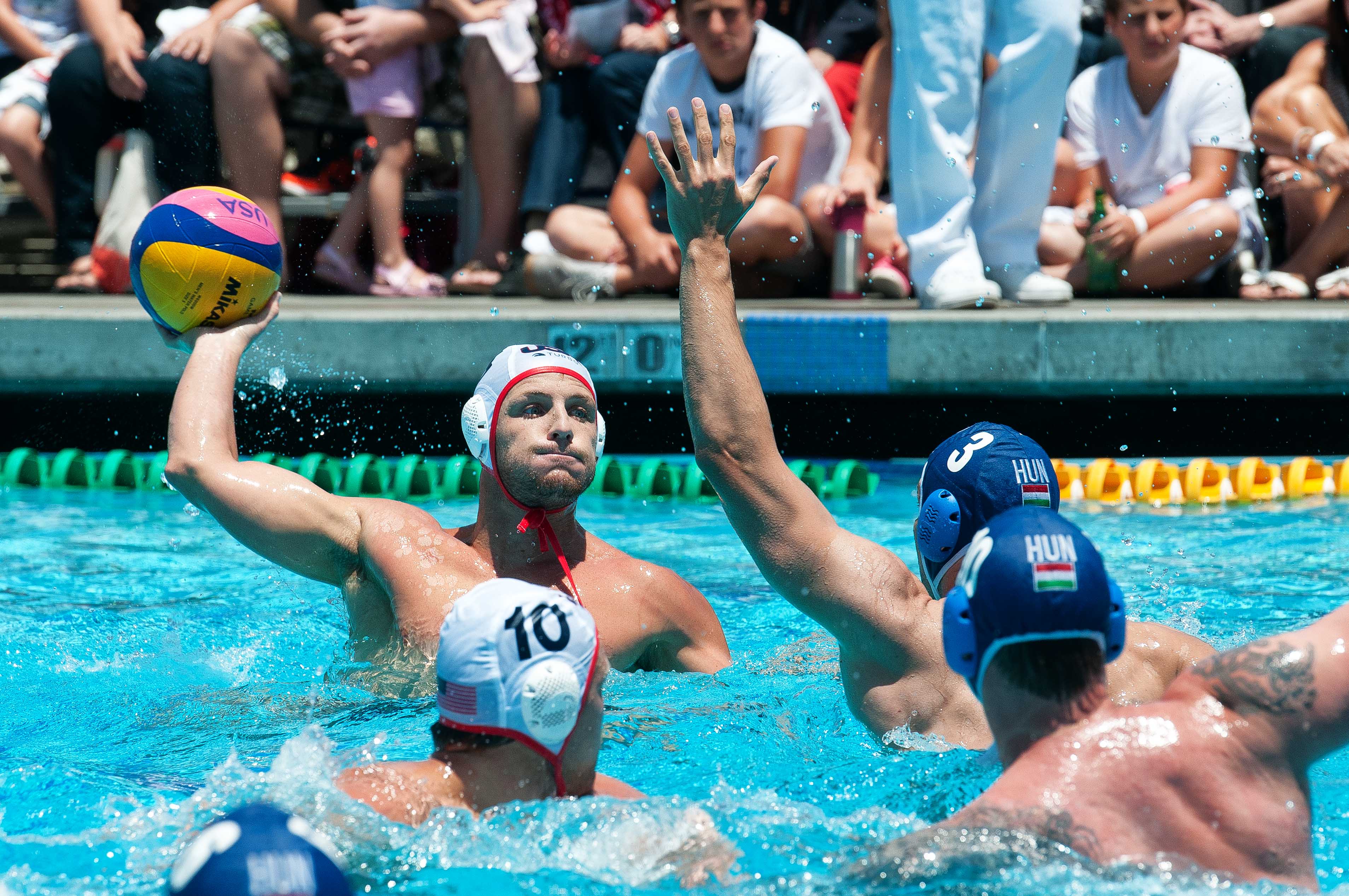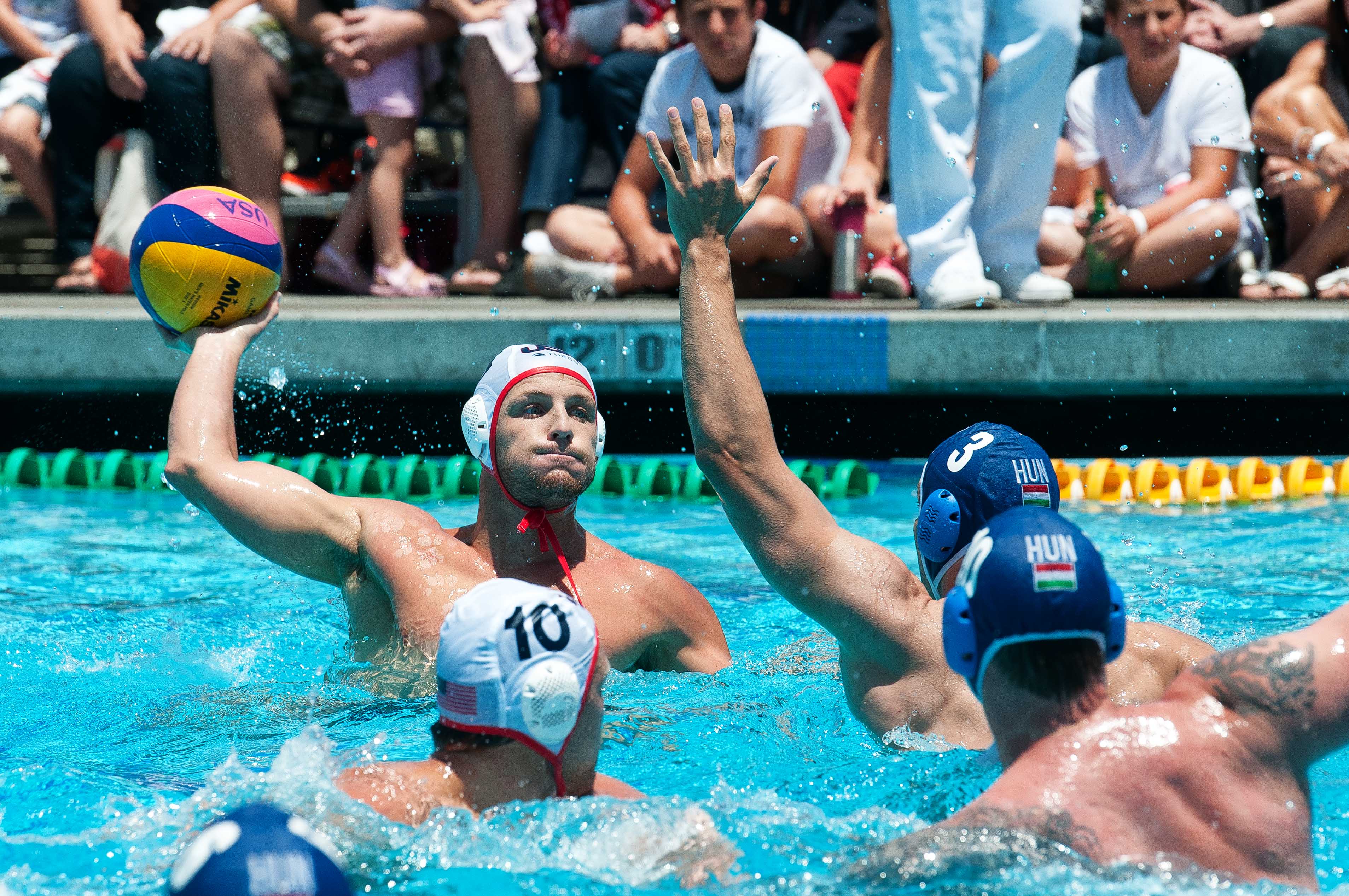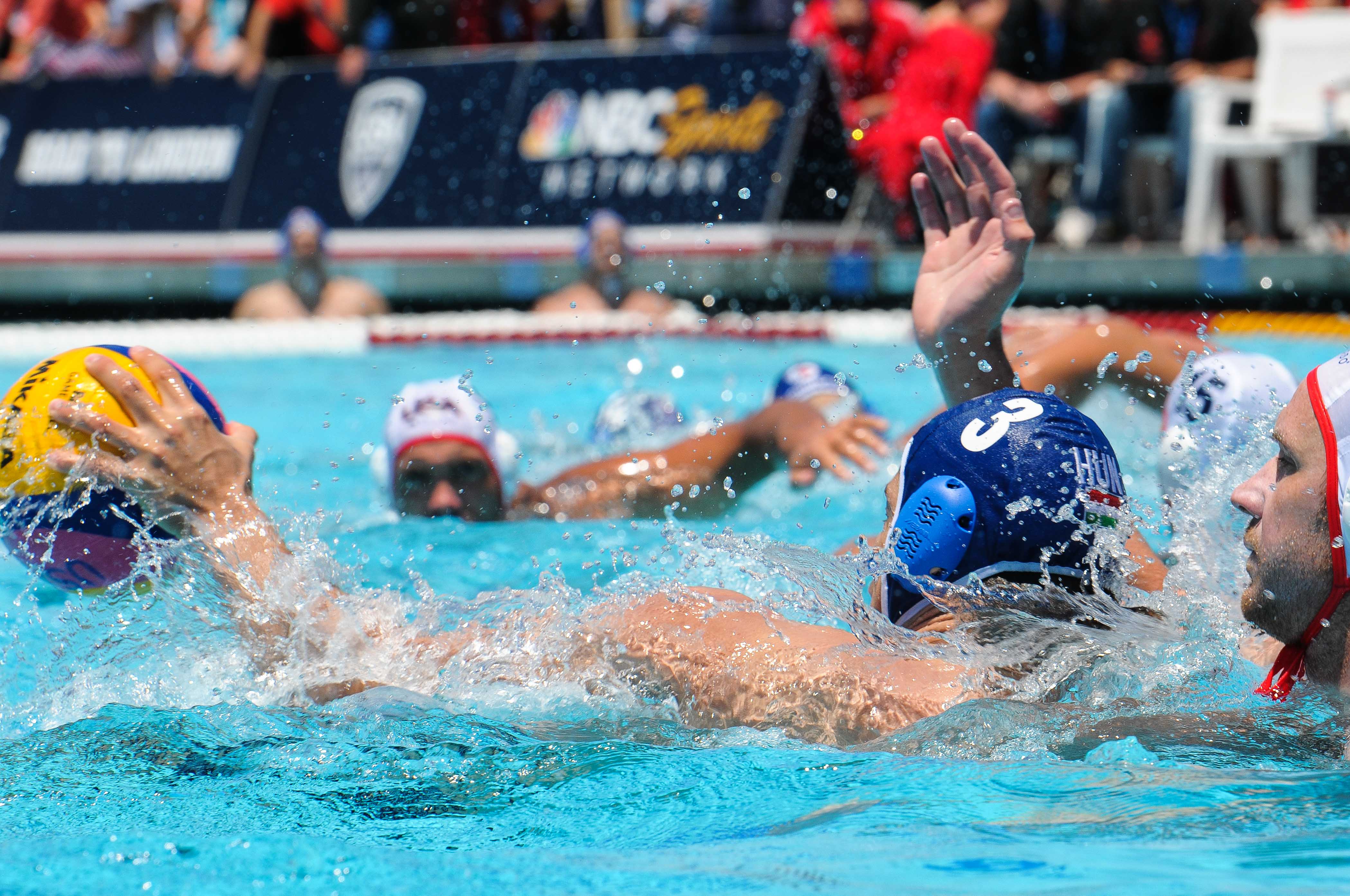Preventing Rotator Cuff Injuries in Water Polo
 The omnipresent thought of a season ending shoulder injury can create hesitation and prevent water polo players from reaching their maximum potential. In general, water polo players are at a higher risk for a rotator cuff injury due to the nature of the sport’s throwing techniques and shoulder patterns. Unlike most sports that involve throwing, water polo players aren’t able to use their legs for support during the action so more strain is placed on their shoulder muscles in order to complete the repetitive motion. Water polo players can reduce their risk of shoulder injuries through prevention programs and exercises, which aim to strengthen surrounding muscles and increase overall stability, flexibility, and mobility.
The omnipresent thought of a season ending shoulder injury can create hesitation and prevent water polo players from reaching their maximum potential. In general, water polo players are at a higher risk for a rotator cuff injury due to the nature of the sport’s throwing techniques and shoulder patterns. Unlike most sports that involve throwing, water polo players aren’t able to use their legs for support during the action so more strain is placed on their shoulder muscles in order to complete the repetitive motion. Water polo players can reduce their risk of shoulder injuries through prevention programs and exercises, which aim to strengthen surrounding muscles and increase overall stability, flexibility, and mobility.
Rotator Cuff Anatomy
Rotator cuff muscles are critical for shoulder movement, arm rotation, and joint stability. In order for the cuff to move, the supraspinatus, infraspinatus, teres minor, and subscapularis muscles must work together to centralize the humerus bone in a player’s shoulder joint. These four muscles begin at the scapula and connect to the top of the humerus. Since water polo motions constantly “wear and tear” on tendons, players must take proper precautions to reduce the amount of stress put on their shoulders. Possible injuries around the rotator cuff include a rotator cuff tear, rotator cuff tendonitis, shoulder impingement, or a shoulder separation. Any of these can cause a player serious pain, weakness, or stiffness, and functional tasks like lifting, reaching, or sleeping may become challenging. Similar to all other muscles injuries, the severity of damage done to a rotator cuff will determine the rehabilitation process and estimated recovery time. If pain persists after initially treating the injury with ice, rest, and non-steroidal anti-inflammatory medications, players should seek immediate medical attention and possibly get a physical examination.
Injury Prevention
Water polo players can reduce the risk of rotator cuff injuries by focusing on using proper training techniques. Players should emphasize building full body strength, especially in their shoulders and core, to ensure opposing muscle stability, mobility, and flexibility. Spending time warming up and cooling down water polo-specific shoulder muscles will increase range of motion and further eliminate the risk of injury. Elite training programs should start with low resistance and high repetitions, and gradually work towards more advanced exercises. This will allow muscles, tendons, and joints to adapt to new loads and correctly form muscle memory. Players who are consistent with their training will maximize their performance and will inevitably perform better on game day.
Warm Up Exercises
In order for players to reach their potential and lower their risk of injury, they must get into the habit of incorporating a prevention program before, during, and after their training. To prepare for a water polo workout, players should spend extra time warming up to loosen rotator cuff muscles and improve shoulder mobility. Here are a few exercise examples players can do daily to warm up their shoulders.
90 – 90’s
Dowel Lying Thoracic Mobility
Bent-Over Windmills
Windmills Split
Strength Training Exercises
In addition to a daily warm up, players should encompass a wide range of shoulder movements to build strength, flexibility, and mobility in rotator cuffs. When completing these exercises, players will be able to properly develop muscles and further prevent the risk of injury. Here are a few examples to include in water polo-specific strength training to enhance performance during an intense game, tournament, or practice.
Band Rotations
Band Bent Over Neck Pull
Shoulder T’s, Y’s, & I’s
MB Standing Side Throw
Recap
When water polo players are determined and committed to improving their game, they must appropriately prioritize injury prevention in order to advance to the next level. Taking the time to properly warm up and complete strength exercises that target shoulder muscles is paramount in daily training regimens. Rotator cuff injuries are very common in water polo and should be taken seriously. However, coaches and players that take the time to implement preventative exercises should greatly reduce their risk of injury. To learn more about incorporating preventative exercises and building a dominant water polo program, check out this article.
About the Author

At Bridge, we are all athletes and coaches first. As athletes, our team has experienced everything from riding the pine on JV, to winning NCAA championships, to competing in the Olympic Games. As coaches, we have helped countless athletes reach their full potential, winning everything from age group section championships to Olympic Gold Medals.
Related Posts

Preventing Rotator Cuff Injuries in...
The omnipresent thought of a season ending shoulder injury can create hesitation and prevent water...

Water Polo Leg Strength Progression
There are many different elements that strength coaches must consider when designing water polo and...

Recovery Between Water Polo Games to...
Recovery is an important process to implement for players in order to prevent injury, reduce...

